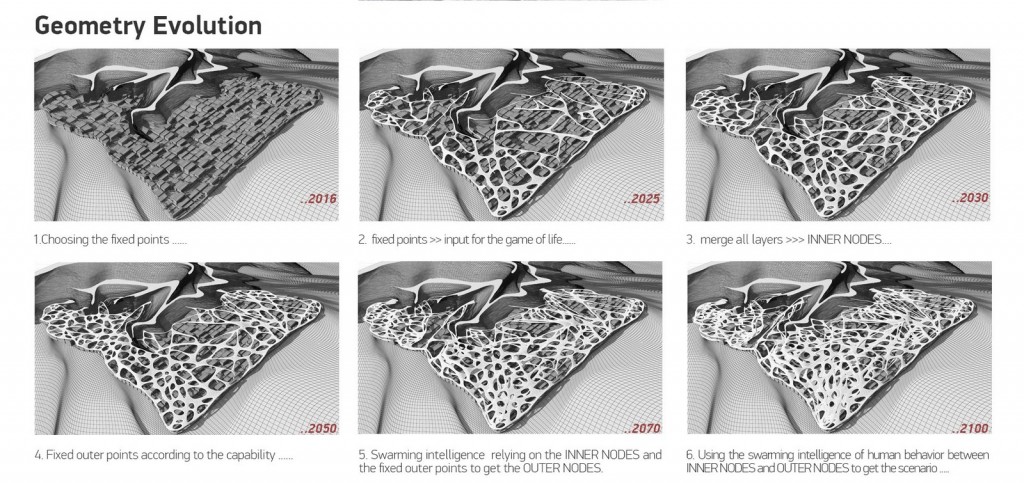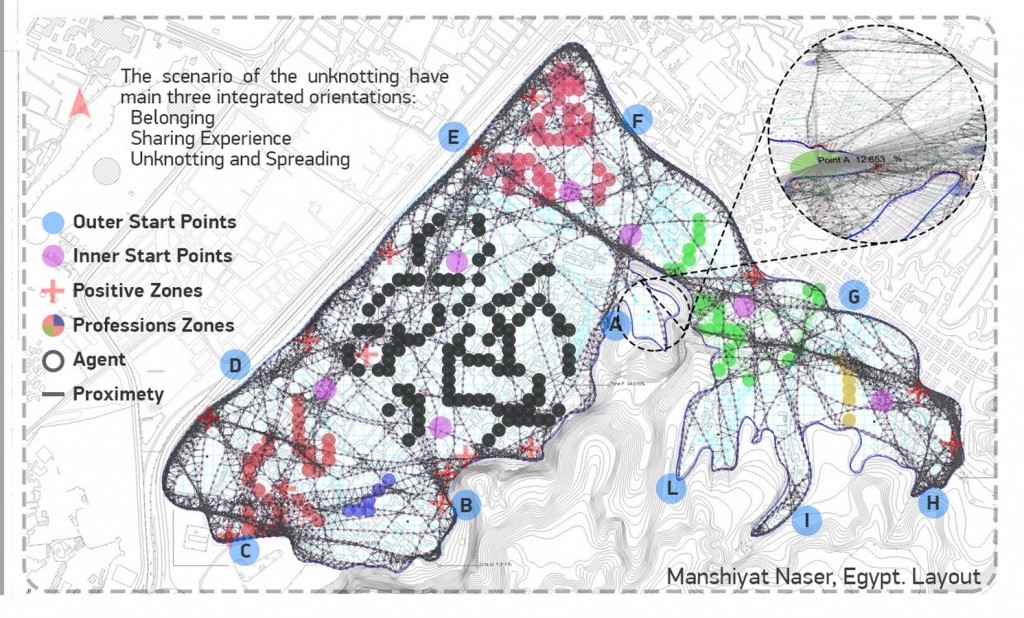The main barrier that obstacle an anarchic city to become a productive city is the chaos and the absence of the system, so UNKNOTTING that chaos and re-systematize it would increase the productivity directly. The scenario of the unknotting have main three integrated orientations:
Architects: Hussien
Team Members: Ahmed Elshfei , Hossam Hesham, Mohammed Mansour
Location: Cairo
Status: Concept

- Belonging: a human will live, produce and work in the same place (generic unit) where he belongs to, that generic units will be aggregated together due to the principle of relativity and overlapping to form integrated nodes (firms of factories) and to create more effective social contact.
- Sharing Experience: The community will be in a constant algorithmic evolution through the positive sharing experience between its components (Nodes and Generic Units).
- Unknotting and Spreading: Using swarming intelligence for human behavior to unknot the complex chaos and re-systematize the relations and functions. The spreading will start from inner and outer start points simulating the unknotting process.

The hierarchy of UNKNOT SYSTEM relies on five scales of units:
- dx Unit: Adaptable Micro-robots that consists of two members and a joint, using machine-learning to gain information from the variables that deal with and output adaptable new solutions through algorithmic process. There are four types of The dx Unit, builders, water generators, energy generators and the brains which lead each group of sub-units and systematize the algorithmic logic on that scale for itself and with the larger scales.
- Brick: bigger composite robots consists of many dx Units, has the role of forming the city generally by morphogenetic process.
- Generic Unit: The unit built with bricks where a family lives, works and belongs to. That lifestyle will increase the livability, belonging and productivity of the individual and the community. That Generic Units will collect data through the contact with humans and their surroundings. It will be algorithmically formed due to the way that envelope will affect human behavior and productivity according to the psychological and mental needs of each function.

- Nodes: Composition of many generic units which could be an integral firm or a factory. The generic units is aggregated together relying on the principle of the relativity and overlapping. That means that a human living in his generic unit and works in the same belonging place, that generic unit is part of a node as the relative and integrated units will be closer, that generic unit may be overlapped with more than one node depending on each generic units’ functions.
- Community: Adaptable composition of many nodes that is in a constant evolution through sharing experience between its contents, Nodes and Generic Units.
Less time, Less money, Less effort, More Productive.

Scenario for UNKOTTING:
- Choosing the fixed points as the living nodes and the important buildings and plazas.
- Using that fixed points as input for the game of life (cellular automata) algorithm for each function (carpenters, farmers, …etc), the output of each process is a layer shows the best solution for each function according to the given inputs. By merging all layers together, we get the INNER NODES.
- Choosing the fixed outer points according to the capability to grow faster and more effective.
- Using the swarming intelligence of humans behavior relying on the INNER NODES and the fixed outer points to get the OUTER NODES.
- Using the swarming intelligence of human behavior between INNER NODES and OUTER NODES to get the scenario of growth and forming the city through generations.

